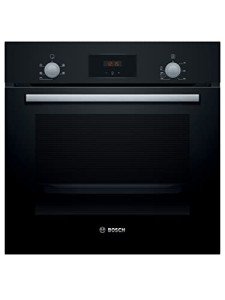14 Savvy Ways To Spend Leftover Ovens Built In Budget

The Comprehensive Guide to Built-In Ovens: A Modern Kitchen Essential
Built-in ovens have actually ended up being a staple in modern kitchens, combining looks, functionality, and space performance into a single appliance. As homeowners pursue both usefulness and style, comprehending the features, advantages, and considerations of built-in ovens can substantially improve the cooking experience. This post delves into what built-in ovens are, their different types, installation factors to consider, and FAQs to assist customers make notified decisions.
What is a Built-In Oven?
A built-in oven is a kitchen device designed to be integrated into kitchen cabinetry, producing a sleek, cohesive search for the kitchen. Unlike freestanding ovens, which inhabit additional floor space, built-in ovens are enclosed within wall units or cabinetry. They are available in different configurations and sizes, enabling tailored solutions that deal with the requirements of diverse homes.
Kinds Of Built-In Ovens
Built-in ovens can be categorized into various types based upon their features and cooking methods. Here are a few of the most common types:
Single Built-In Ovens
- Best for little kitchen areas and homes with modest cooking requirements.
- Generally have one main cooking compartment, creating a compact footprint.
Double Built-In Ovens
- Ideal for avid cooks and bigger homes.
- Features 2 different cooking compartments for versatile meal preparation.
Wall Ovens
- Installed at eye level for simple gain access to.
- These ovens often include convection technology for even cooking outcomes.
Steam Ovens
- Usage steam to cook food, protecting wetness and nutrients.
- Great for health-conscious individuals.
Mix Ovens
- Combine microwave and conventional oven functionalities.
- Deal flexibility for fast meals and conventional baking.
Italian or European Style Ovens
- Often designed with special visual appeals and advanced cooking innovations.
- Popular for high-end kitchen designs.
Benefits of Built-In Ovens
Built-in ovens provide a range of benefits that appeal to modern property owners looking for both functionality and aesthetics. A few of these benefits consist of:
- Space Efficiency: Built-in ovens save valuable counter area, which is especially beneficial in smaller cooking areas.
- Boosted Aesthetics: With a customized appearance, built-in ovens enhance the overall design of the kitchen while offering a smooth integration with kitchen cabinetry.
- Versatile Cooking Capacity: Available in numerous sizes, these ovens cater to the cooking requirements of various homes, from single residents to large families.
- Availability: The installation at eye level makes built-in ovens much easier to gain access to, lowering the threat of spills or injuries when positioning or eliminating hot meals.
- Lower Energy Consumption: Many built-in ovens come with energy-efficient modes that help in reducing electric consumption in time.
Setup Considerations
Installing a built-in oven requires mindful preparation and factor to consider. Here are some factors to remember:
- Dimensions: Before buying a built-in oven, determine the area offered to guarantee a proper fit. Built-in ovens can be found in particular standard sizes, so it is essential to choose the best one.
- Ventilation: Adequate ventilation is required for efficient operation. Ensure there is an appropriate exhaust system that abides by regional building codes to prevent overheating.
- Electrical Requirements: Built-in ovens may require specific electrical outlets or circuitry. Speak with a qualified electrical contractor to make sure that the installation adheres to safety requirements.
- Expert Installation: Although some house owners choose DIY installation, employing a specialist can help make sure safety and appropriate installation for optimum efficiency.
Upkeep Tips for Built-In Ovens
Maintaining your built-in oven not just extends its lifespan but also makes sure efficient operation. Here are some essential maintenance suggestions:
Regular Cleaning:
- Wipe down interior surface areas after each usage to avoid buildup.
- Use vinegar and baking soda for non-toxic cleaning.
Examine Seals:
- Inspect the door seals to prevent heat loss.
- Replace worn-out seals without delay.
Test Thermostat:
- Periodically examine the temperature level precision with an oven thermometer. Change settings as necessary.
Service Annually:
- Schedule expert upkeep once a year to inspect electrical parts and guarantee safe operation.
| Maintenance Task | Frequency | Purpose |
|---|---|---|
| Clean interior | After each use | Avoid accumulation and odors |
| Inspect seals | Regular monthly | Make sure no heat escapes |
| Test thermostat | Every 6 months | Inspect temperature precision |
| Expert service | Yearly | Ensure optimal performance |
FAQs About Built-In Ovens
1. Do built-in ovens been available in different sizes?Yes, built-in ovens are offered in numerous sizes to fit various kitchen configurations and cooking needs. built-in double oven and hob packages is important to determine the readily available area before purchasing. 2. Can built-in ovens be utilized as regular ovens?Absolutely. Built-in ovens function like routine ovens,
permitting you to bake, broil, and cook a variety of dishes. 3. Are built-in ovens energy-efficient? Lots of built-in ovens come with energy-saving features and are designed to use less
electrical energy than freestanding models. 4. The length of time does installation take?Installation time can differ based on intricacy however generally ranges from 1 to 3 hours. It is suggested to employ a professional for ideal outcomes. 5. What is the life-span of a built-in oven?With appropriate maintenance, built-in ovens can last anywhere from 10 to 15 years or longer.
Built-in ovens provide a multitude of benefits for modern households, integrating convenience, energy effectiveness, and stylish design into one option.
When picking and setting up a built-in oven, it's vital to think about the type that best fits your cooking practices, offered area, and aesthetic preferences. By comprehending the advantages, installation requirements, and maintenance required, homeowners can raise their cooking experience and create sensational kitchens that impress both household and guests alike. Purchasing a built-in oven can be an advantageous addition that improves cooking, boosts home value, and savors culinary thrills for several years to come.

